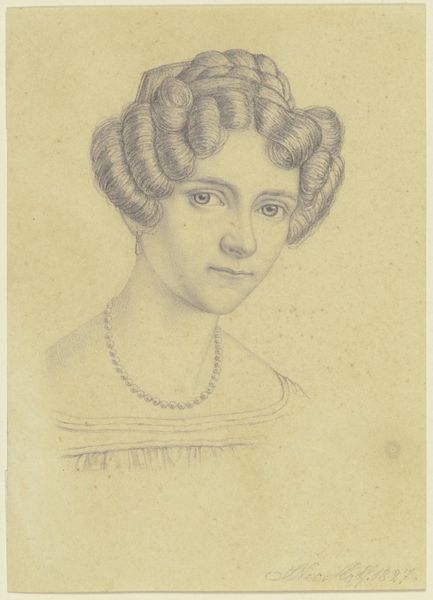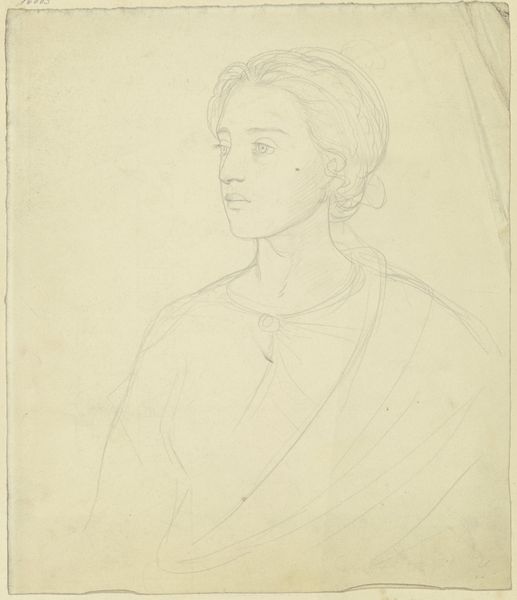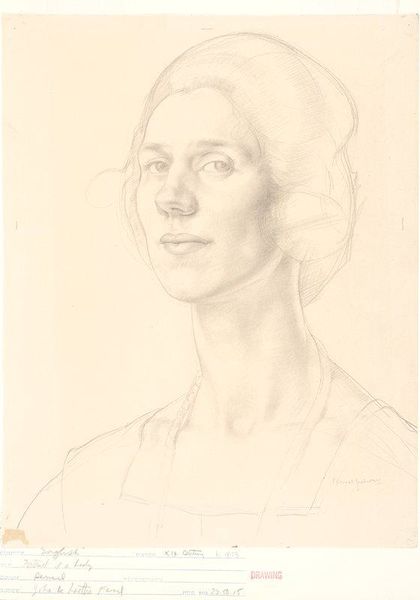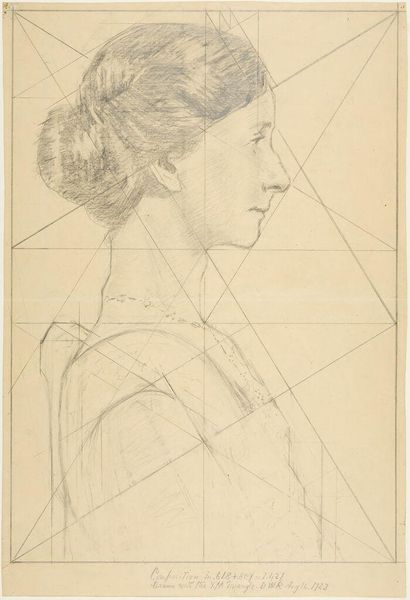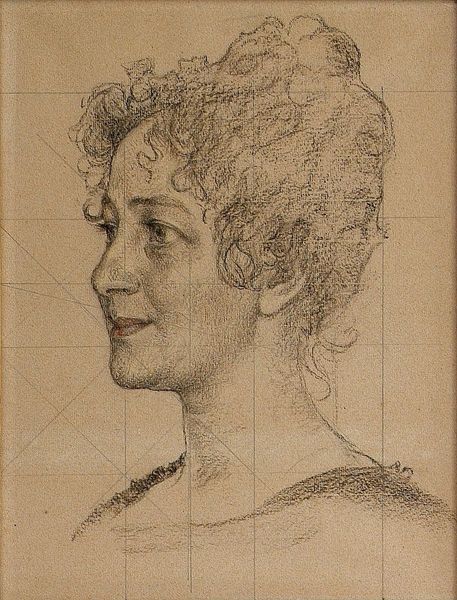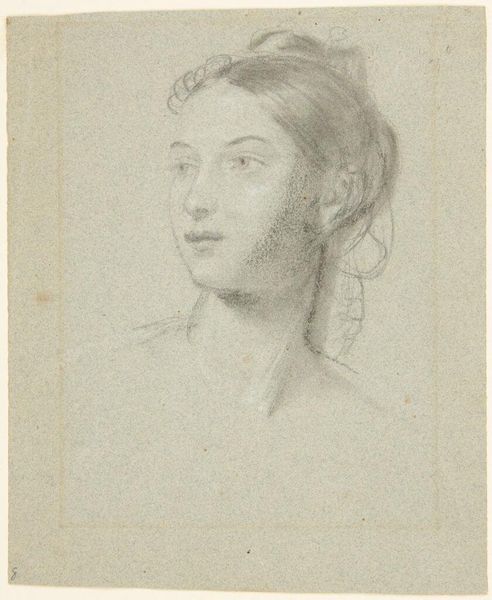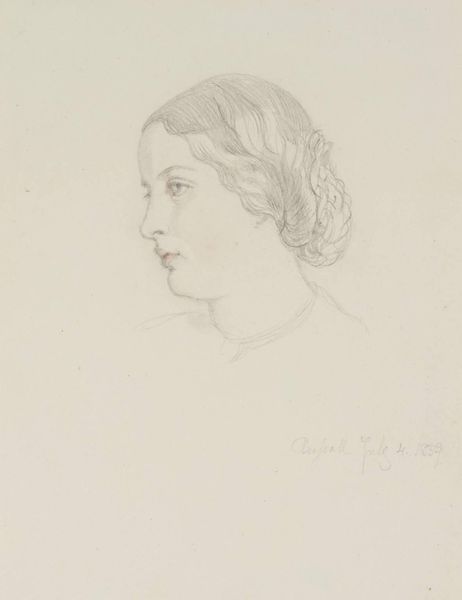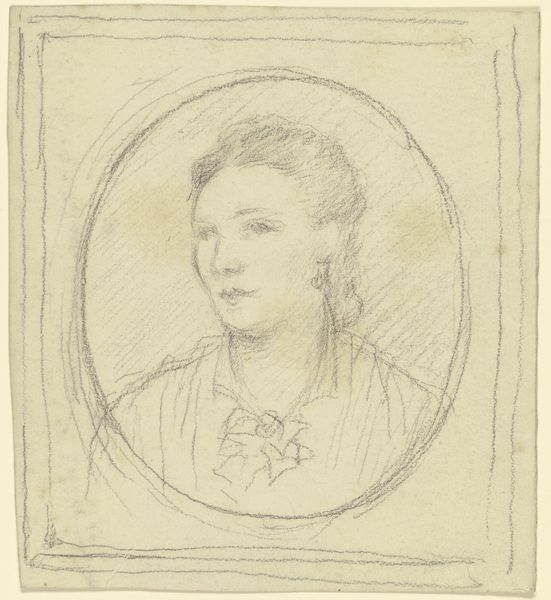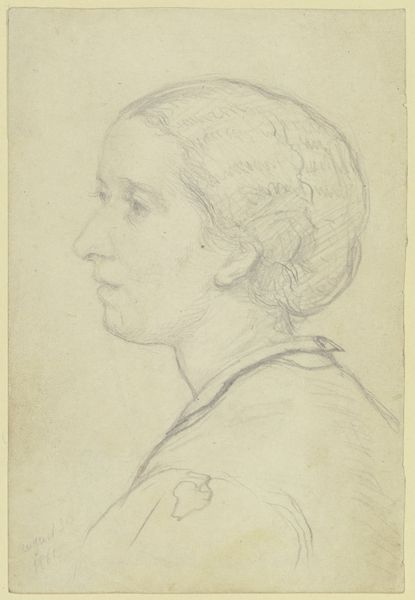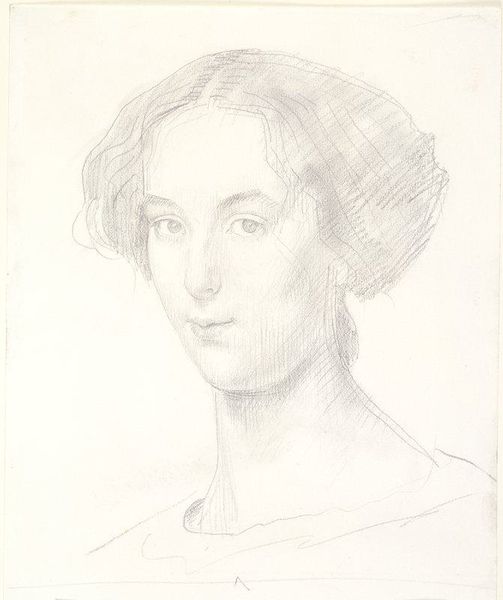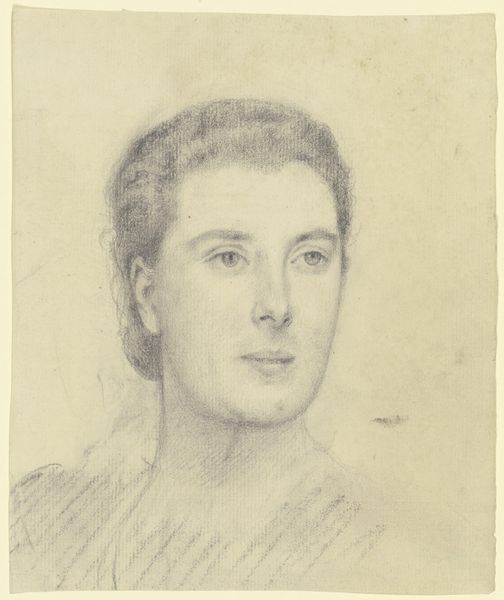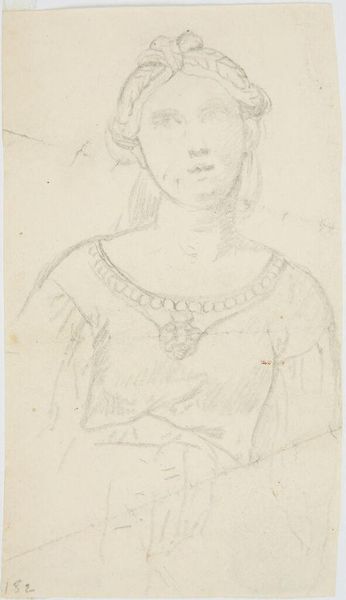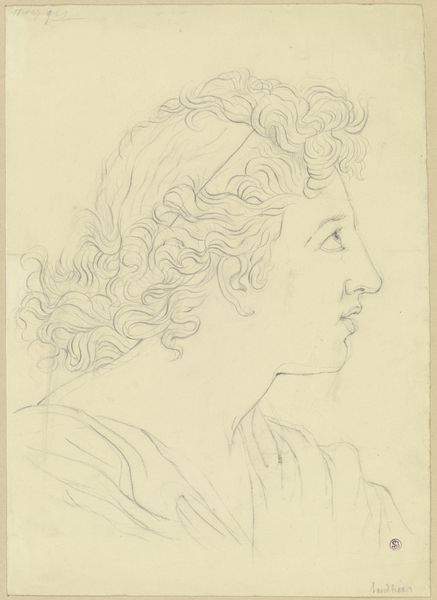
Portret van mejuffrouw M. Snijder van Wissenkerke met op de achtergrond een weide met bomen 1895 - 1897
0:00
0:00
drawing, paper, pencil, graphite
#
portrait
#
pencil drawn
#
drawing
#
dutch-golden-age
#
paper
#
pencil drawing
#
pencil
#
symbolism
#
graphite
#
portrait drawing
#
realism
Dimensions: height 230 mm, width 159 mm
Copyright: Rijks Museum: Open Domain
Curator: Jan Toorop’s portrait drawing, "Portret van mejuffrouw M. Snijder van Wissenkerke met op de achtergrond een weide met bomen", created between 1895 and 1897, offers us a glimpse into Dutch society at the close of the 19th century. Editor: My first thought is the sheer dedication to rendering every tiny detail. The texture of her hair, the background—all these intricate graphite strokes create a captivating stillness. Curator: The subject, Miss Snijder van Wissenkerke, comes from a time when social standing greatly impacted opportunities for women in arts. The background of trees suggests a connection to nature and a retreat from industrial progress during that period. Editor: I'm drawn to the process itself— the paper, the graphite pencil. This wasn't about fast mass production; it's about meticulous, deliberate mark-making, like crafting lace or embroidery, and, again, laboriously recording likeness. What labor went into it speaks to her stature. Curator: The piece reveals an interesting tension; the sharp focus on her portrait contrast with a landscape drawn in light sketches in the back. It captures her likeness as an individual but embeds her into Dutch culture. Editor: The background almost seems to be a veil or curtain. This isn't just about seeing; it's about revealing a very precise way. I see this attention to line work like the detailed focus someone put into producing luxury goods from this era, things that took hours to finish. The materiality itself lends authority. Curator: Indeed. Toorop straddles symbolism and realism here. Miss Snijder’s presence signifies more than merely who she was, pointing toward societal trends and evolving definitions of women within art, public perception, and their roles in larger community discussions of gender during the late nineteenth century. Editor: Examining this closely really drives home how much time and hand-skill went into portraiture before the age of photography. Curator: Looking closer here really expands my appreciation for not only Miss Snijder's identity but her socio-political place and representation during this era. Editor: And for me, examining the piece from this tactile perspective brings a deeper admiration for those unacknowledged means and ways through which labor shapes beauty.
Comments
No comments
Be the first to comment and join the conversation on the ultimate creative platform.
